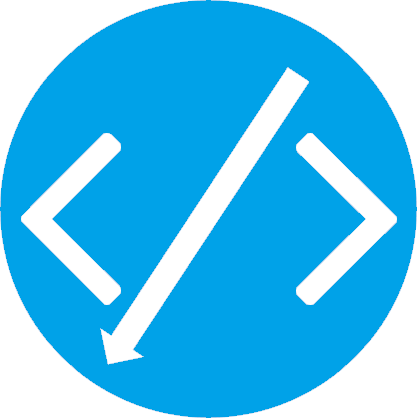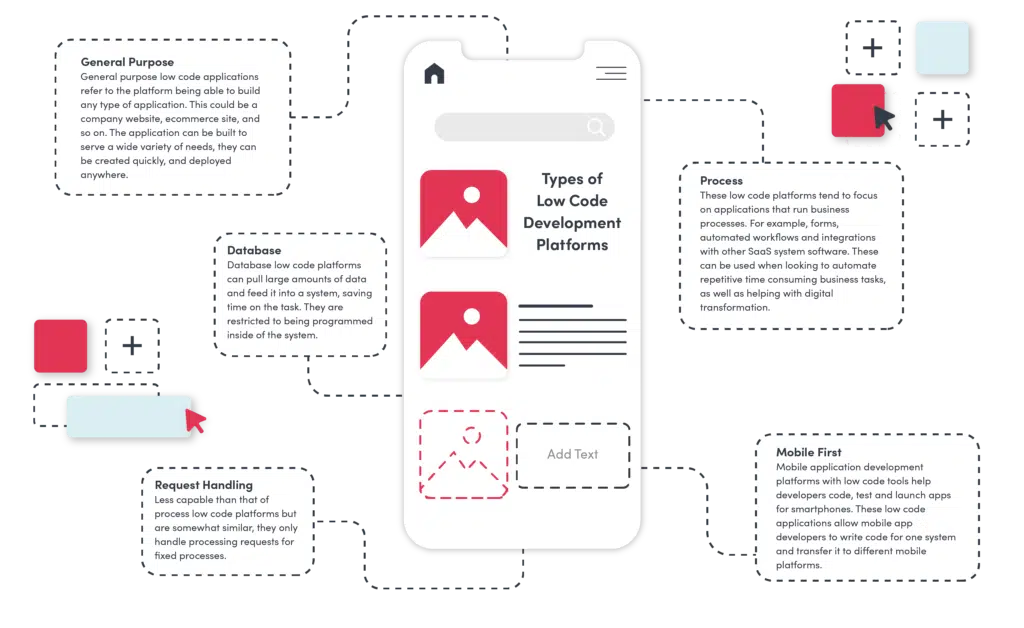Excellent News To Picking Low-Code Platform Info
Excellent News To Picking Low-Code Platform Info
Blog Article
Advantages Of Low Code Application Development For Non-Developers
Due to a number of key factors, Low-code Application Development is accessible to people who are not developers. They are also known as "citizen designers."
Drag-and-Drop Builders : Low-code platforms have drag-and-drop interfaces, which allow non-developers, who do not necessity of writing code, to create visual applications. This makes it much easier for people who don't have technical backgrounds to get involved in the development process.
WYSIWYG editor: "What you see is what you will get" editors let users design interfaces, workflows, and other features in a manner which closely resembles the final result. They are simpler to understand and to use.
Simplified logic and Workflow Design
Visual Workflow Modeling: Users are able to develop business processes and apply logic through visual flowcharts and models, which are easier to understand than the traditional methods of coding.
Pre-built Components for Logic: Low-code platforms typically include already-built logic (e.g. loops and conditional statements) which can be easily set up, eliminating the need for complex programming.
Templates and components that are reuseable:
Libraries of Templates that are pre-built Many platforms that offer low-code come with templates for the most common applications. This lets developers get started quickly and easily while non-developers are able to customize the templates however they see fit.
Reusable Widgets and Modules: Users can make use of reused widgets. This makes it easier to create and eliminates the requirement for extensive knowledge.
Guided Development & Tutorials
Step-by step guides Platforms offer tutorials, tips on screen, and guided development paths to assist developers who are not experts in developing applications.
Interactive Tutorials: Interactive and hands-on tutorials enable users to learn by doing. They can build confidence using the platform.
Integration with existing tools
Seamless Integration - Low-code systems can be easily integrated with existing business tools and systems (e.g. ERP CRM, ERP) which gives even non-developers the ability to develop apps that work into their workflows.
APIs/Connectors: The built-in APIs/connectors allow non-developers to connect their applications to external services.
Collaboration Features:
Team Collaboration: Features like real-time collaborative workspaces, as well as shared workspaces allow for non-developers to collaborate effectively with developers, business analyst and other users.
Access Control Based On Roles: Developers who are not developers are able to be assigned roles and access levels that allow them to contribute without compromising functionality or security.
Automated Testing and Debugging:
Low-code platforms have tools for testing and debugging that are built-in. They automatize this procedure, making it much simpler for non-developers to make sure their apps function.
Error Highlighting: When problems occur the platform flags mistakes and suggests solutions and guides non-developers through troubleshooting procedures.
The general rule is that low-code development has the ability to open up development to a wider audience. This is an important benefit for those who aren't developers. Low-code applications allow business users to be involved in the development and maintenance of apps by offering visual tools as well as a guiding experience. This helps bridge the gap between business and technical demands. Read the top rated Low-code Platform for application development for site tips including no code platforms, jdbc server, build with docker, cross platform app development, build with docker, cross platform mobile dev, sso azure, cross platform mobile app development, rad application development, jdbc server and more.
Low-Code Development's Cost-Effectiveness Is Among The Major Advantages.
Low-code app development offers numerous advantages, including cost-effectiveness. This is an appealing alternative for companies looking to reduce development costs without sacrificing quality. Here are the key benefits: Reduced development costs:
Less Coding Requirements: The low codes platforms remove the need for extensive hand-coded apps. Developers will take less time and energy developing applications. This also results in lower labor cost.
We require less developer resources: Low-code development requires shorter time, and it is simpler. This means less developers are needed. This can reduce cost of hiring and staffing.
Speedier Time to Market
Rapid development process: Visual development tools and prebuilt components offered by low-code platforms facilitate rapid development of applications. This allows companies to bring their products to market quicker. This may result in quicker revenues, as well as improved position in the marketplace.
Rapid Prototyping: Businesses can quickly create prototypes and then test them, thus reducing the time required in the development stage and allows for quicker iterations based on user feedback.
Lower Maintenance Costs
Because of their modular architecture and standardised components, low-code platforms usually simplify the maintenance of applications. This reduces the cost of maintenance and support.
Automated Updates: Many low-code platforms handle patches and updates in a way that is automatic making sure that applications remain safe and up-to-date without requiring lengthy manual intervention.
Efficient Resource Utilization:
Contributions from non-developers: Low-code platforms enable both developers and business users to take part in the development process. This openness of development processes enables businesses to utilize the skills and abilities of a broader number of employees.
Improved Utilization of IT Resources: IT departments are able to concentrate on more strategic projects rather than being bogged down by routine tasks of development increasing overall productivity and efficiency.
Price models that are scaleable:
Subscription Pricing: Many platforms with low-code offer flexible pricing models based on subscriptions which are scalable in accordance with the amount of usage. This lets companies adjust their budgets in line with their growth and requirements without paying huge initial cost.
Pay-as-you go options: Some platforms provide pay-as-you-go options that ensure that businesses pay only for the resources they use that are useful for small and new businesses with limited budgets.
Costs of Third-Party Software reduced:
Built-in Functionalities: Low-code systems typically come with built-in functions and integrations that minimize the requirement for third-party tools and software, which results in savings on software licensing and subscription fees.
Pre-Built Intergrations: The ability to use pre-built integrations and pre-built integrations of popular services and system minimizes the need for custom development, and helps save time and money.
Improved ROI
More efficient return on investment The combination of speedy development, lower cost, and a faster time to market means businesses are able to get a quicker ROI (ROI) for their software.
Enhanced Ability. Businesses can swiftly adapt to market changes and customer requirements to ensure they are relevant. They also can profit from new business opportunities when they come up.
Low-cost Training:
User-Friendly Interfaces: The user-friendly interfaces and user-friendly features of low-code platforms minimize the learning curve, thereby making it less necessary to conduct lengthy training.
Accessible Resources: Many low code platforms come with comprehensive tutorials and training materials as well as community assistance. These resources reduce the requirement for formal education and its associated expenses.
Collaboration Streamlined:
Improved Collaboration Tool: The built-in collaboration tool facilitates better collaboration and communication between team members. This leads to faster development processes and also reduces the cost of projects.
Unified Development Environment. A single unifying software development environment can streamline processes and decrease the complexity and cost of managing different platforms and tools.
In the end, the value of low-code development comes in its ability to lower the cost of development and maintenance as well as speed up time to market, maximize utilization of resources, as well as provide flexibility in pricing. All of these factors provide substantial financial benefits to businesses, making low-code a compelling choice for businesses looking to maximize their development budgets and create high-quality, flexible high-quality and robust applications. View the top my explanation for website examples including low code development platforms, no code platforms, microsoft azure sql, develop web application, low code platforms, azure sql, multiplatform mobile app development, azure sql databases, cross platform mobile development, azure sql and more.
In Terms Of Vendor Support And Community Support, Low-Code Application Development Has Many Advantages.
Low-code platform development offers significant advantages, such as support from vendors and a community. This is crucial to ensuring successful application implementation, ongoing maintenance and continuous improvement. Vendor Support
Comprehensive Technical Support:
Support Teams with Dedicated Support: Many low-code platforms have access to dedicated support teams who can assist with technical issues, troubleshooting and help, making sure that all issues are solved promptly.
Some vendors offer 24/7 support. This is advantageous for companies operating across time zones.
Onboarding and Training:
Vendors offer structured training programs such as webinars, tutorials, and certificates to assist users in becoming familiar with the system.
Personalized Onboarding: Many vendors offer personalized onboarding services to help new customers to use the platform in a way that is effective and customize it to their particular requirements.
Updates and regular updates:
Continuous Improvement: Low-code platforms manufacturers often release regular updates which include new features as well as performance improvements and security patches. These updates ensure that their platform is up to date and secure.
Feedback Integration: Vendors integrate user feedback in their cycle of development to ensure that the platform is evolving to meet the ever-changing needs of its users.
Comprehensive Documentation:
Documentation is detailed users are able to access a large and well-organized documents, which range in complexity from basic modification to advanced.
API References API documentation can help developers build and integrate apps using the Low-Code platform.
Consulting and Professional Services
Expert Consulting: Most vendors offer consulting services to help with strategic planning, architecture, and complex implementations. This allows users maximize their software's capabilities.
Custom Development: Some companies offer services that permit them to develop specific features or systems that aren't offered out of the box.
Community Support
Active User Communities
Forums and discussion boards: Many low code platforms have vibrant online communities where users can discuss issues, share solutions and work together on best practices.
User Groups and Meetings Virtual and local groups of users and meetups give you the chance to study to network, share information, and exchange experiences with others.
Knowledge Sharing and Collaboration
Community-Contributed Resources: Users often share templates, modules, and extensions that they have developed, which can be reused or adapted by others, accelerating development and innovation.
Crowdsourced Problem-Solving: The collective wisdom and collective knowledge of a community can be an invaluable resource to troubleshoot issues and discover creative solutions to complicated problems.
Learning and Development
Community-led training: Many communities offer webinars, workshops, and training sessions led by experts in the field.
Online Tutorials and Courses: Members of the community make and provide tutorials, online classes and guides on how to use. This enhances the learning resources that are accessible to the users.
Feedback and Influence
Product Feedback Channels. Community forums usually include channels where you can provide feedback to the manufacturer. This feedback may influence the development and improvement of features.
Beta Testing Programs. Active community members can take part in beta-testing programs. They will have early access to the latest features of the platform, and also an an opportunity to shape the future of the platform.
Recognition and Support
A lot of vendors have community recognition programs, such as MVP programs (Most Valuable Professional) that recognize the efforts of their members who are active in their communities.
Support from peers: Community members tend to be willing to provide peer-support, offering their expertise and guidance to those who may be less experienced. They foster a collaborative atmosphere by encouraging cooperation and creating a positive atmosphere.
Overall the combination of strong support from the vendor and an active connected community offers an entire support network for low-code application development. This ensures that users have the expertise, resources and collaboration opportunities that they require to be able to build and implement their apps.